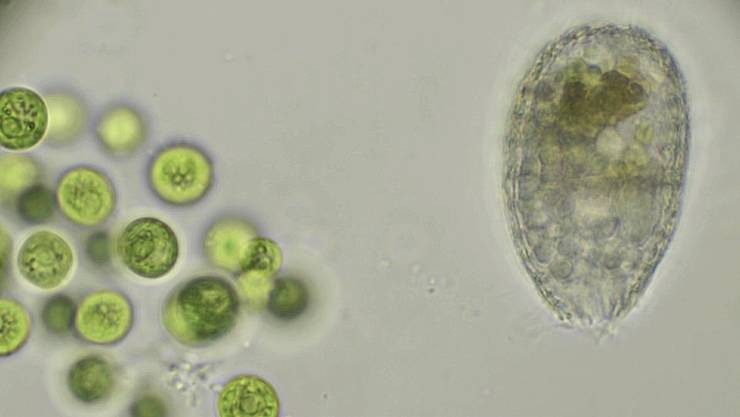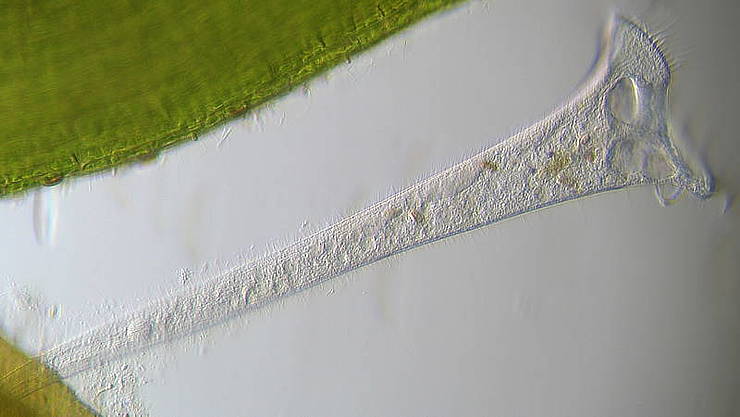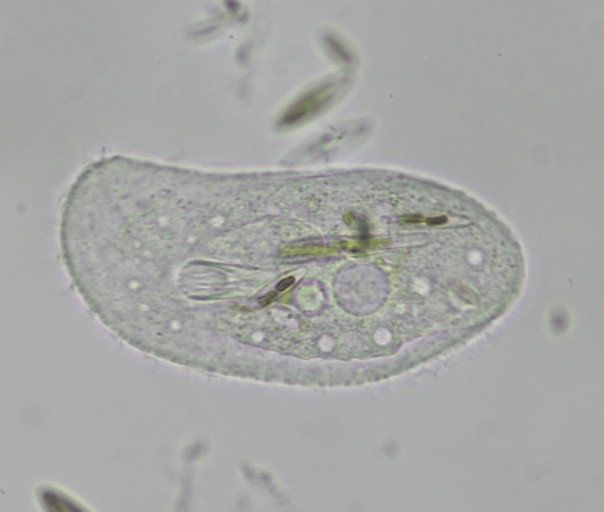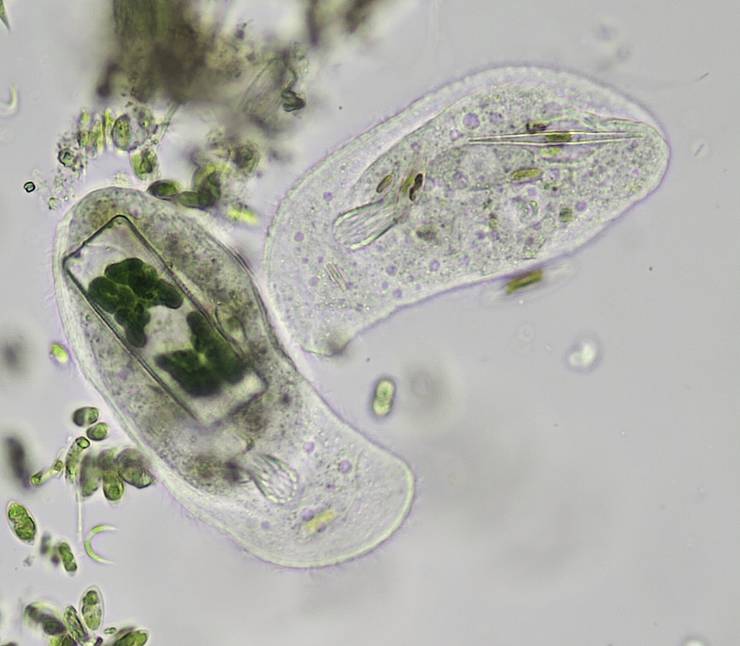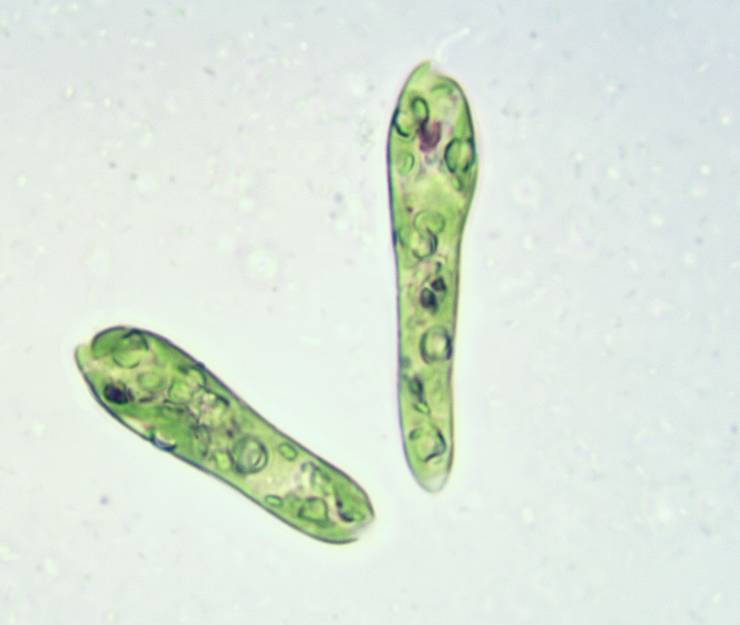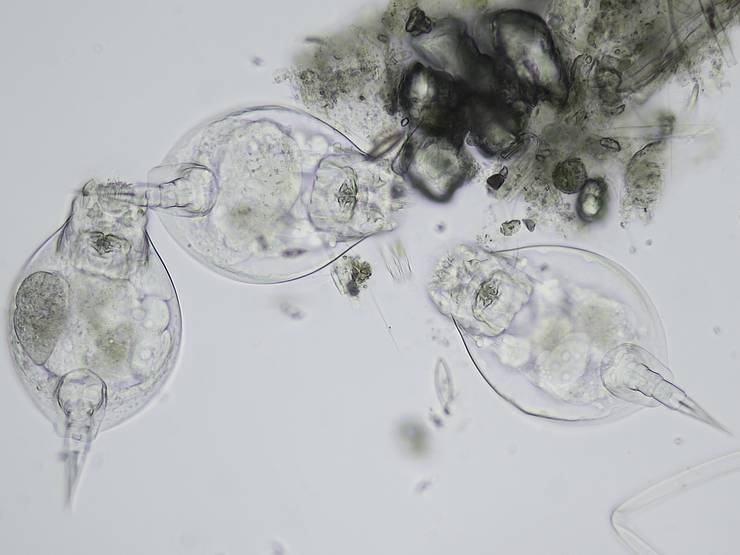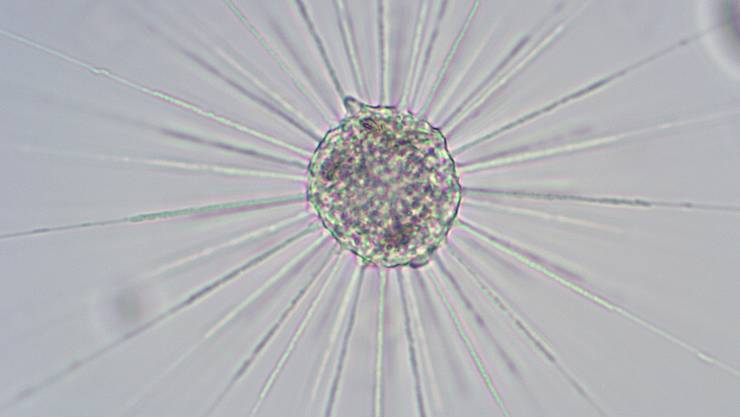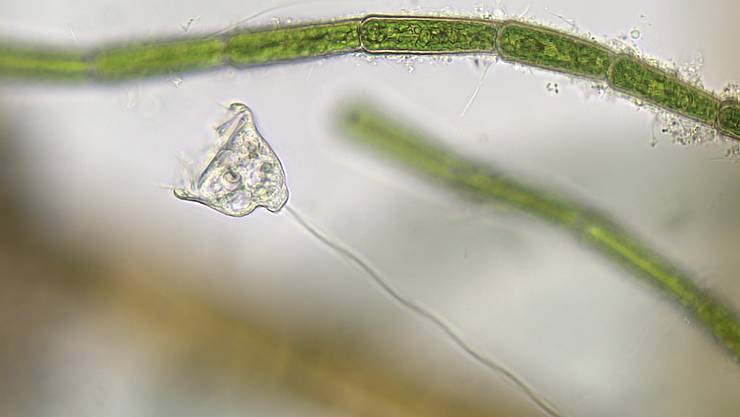How is a hay infusion prepared?
Valuable tips and tricks: hay infusion under the microscope
At present, winter is back with full force, and smaller ponds are even completely frozen. It is foreseeable that it will take some time before most aquatic organisms, ornamental algae and other microorganisms canbe found in sufficient numbers in nature. A hay infusion is ideal for this microscopic "dead season".
Important: Disease-causing organisms can also proliferate in a hay infusion. It is essential to ensure strict hygiene when handling the infusion (e. g. wash hands thoroughly after handling the samples)!
For the hay infusion, a small handful of hay or dried grass, leaf litter or a little moss is infused in water. In hay or on other dry plants, leaf litter etc., there are numerous resting stages of bacteria (e. g. spores of the so-called "hay bacterium" Bacillus subtilis), algae, other protozoa or rotifers and waterbears. After a few days in the water, these organisms come back to life. The bacteria that decompose the plant material multiply very strongly and form a bio-film on the surface of the water. Bacteria serve as the basis of nutrition for many other organisms, e. g. ciliates, amoebae or heliozoa. A few days later, these organisms also proliferate more and more. Some are big enough to be seen with the naked eye as tiny floating dots in the upper layers of the infusion. Subsequently, predatory organisms that feed on ciliates appear. This includes Coleps or cyclops. Bacterial degradation produces nutrients such as nitrate and phosphate, which act as food for the algae and eventually turn the water and glass surface green. This way an increasingly diverse community of countless organisms develops from day to day.
However, not all microorganisms develop such permanent stages. The well-known Paramecium, for example, are not included. If such single-celled organisms are to be propagated, then the water in the infusion must come from a pond or an aquarium. With tap water or mineral water it is not possible to reproduce Paramecium in a hay infusion. They are very common in mud, on aquatic plants or in the filter of the aquarium.However, not all microorganisms develop such permanent stages. The well-known Paramecium, for example, are not included. If such single-celled organisms are to be propagated, then the water in the infusion must come from a pond or an aquarium. With tap water or mineral water it is not possible to reproduce Paramecium in a hay infusion. They are very common in mud, on aquatic plants or in the filter of the aquarium.
If you want to observe the organisms for several weeks, you can top up evaporated water with distilled water or rainwater on a regular basis. Paramecium, rotifers and some others can also be fed specifically to increase the rate of reproduction. Afterwards one can try to inoculate a new culture with the desired organisms and multiply them further. Fishkeepers who want to use such single-celled organisms as food for very small fish fry feed such live cultures with condensed milk, microalgae or yeast. Bacteria multiply more strongly when a corn of rice or grain is added to the mixture. Special powdered food and food suspensions are available from specialist aquarium retailers.
If, for example, Paramecium or rotifers from the infusion are to be used for the rearing of juvenile fish, no Coleps must be present in the batch. These usually feed on other ciliates, but can multiply in large quantities in the live culture or breeding tank. Coleps then colonize the fish's mucous skin and can cause severe damage to the fish fry! Therefore, a regular microscopic control of all food cultures, but also in the breeding tank is highly recommended. Coleps do not necessarily have to be introduced from live cultures, they are commonly present in the aquarium anyway and multiply even if the fry is fed on staple food and flakes only.
How to prepare the infusion:
Put a small handful of hay or other dry plant residues (leaves, moss) into a large (approx. 1L) jar and add about 500mL of water. Ideal is water from a pond or aquarium. Cover the vessel loosely (e. g. with a piece of kitchen towel and a rubber band) and place it in a warm, bright spot (at least at room temperature, but without direct sunlight). The infusion can start to smell especially with too much hay, this should be taken into account when choosing the location.
After a few days, the biofilm is formed from bacteria, and gradually the various larger organisms appear. As the oxygen content in the vessel decreases sharply from top to bottom, other organisms are found on the surface than on the bottom. Depending on the pH-value and mineral content, the community can also change in the hay infusion; if the water contains silicate, diatoms appear as a brownish coating on the glass.
If the batch is no longer needed, it should be disposed of and all containers or tools should be disinfected with hot water and thoroughly cleaned.

 Deutsch
Deutsch
 English
English
 Francais
Francais
 Español
Español
 Italiano
Italiano
 Nederlands
Nederlands
 Polski
Polski
